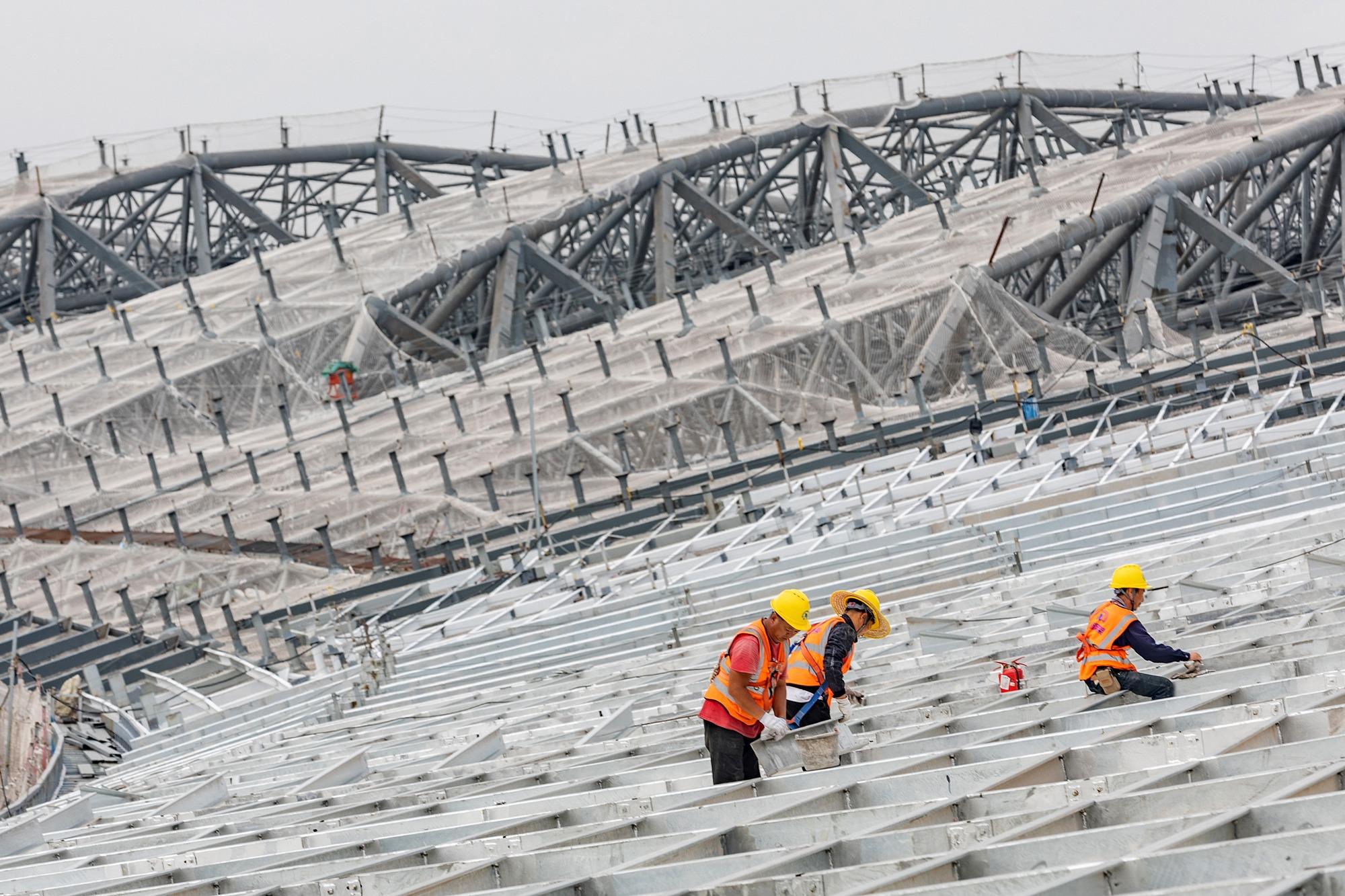 Builders work at the construction site of Jiangbei International Airport in Chongqing. (PHOTO / XINHUA)
Builders work at the construction site of Jiangbei International Airport in Chongqing. (PHOTO / XINHUA)
China should build more airports in central and western areas to promote links with other economies involved in the Belt and Road Initiative, said Wang Yu, chairman and president of Spring Airlines, who is also a member of the 14th National Committee of the Chinese People's Political Consultative Conference.
During the two sessions, Wang submitted multiple proposals related to airport construction, aiming to help promote high-quality development of the civil aviation industry in China.
Wang suggested that during the 14th Five-year Plan period (2021-25) and 15th Five-Year Plan period (2026-30), China should build more airports in central and western regions and launch new flights or add frequencies of flights that connect eastern and western China.
READ MORE: Angolan airport set to become symbol of BRI
"Many parts of central and western China are adjacent or close to other economies involved in the BRI, including those in Central Asia, South Asia and Southeast Asia. Building more airports can help promote economic ties and exchanges between China and those countries and regions," Wang said.
He added that inconvenient transportation is a main factor restricting development of central and western China, due in part to mountainous terrain. It is difficult and costly to build roads and railways, with higher operating and maintenance costs. In comparison, air transport is faster and more efficient.
By 2035, China aims to lift the number of civil transportation airports to about 400 nationwide, according to a guideline of the State Council, China's Cabinet. The current number stands at 259. In central and western regions, airport density is much lower than that of eastern China.
"China's central and western areas boast the largest number of high-altitude airports. The country should further promote the development of the regional aviation market, launch more regional routes and build a group of specialized and scaled regional carriers," said Li Guijin, a professor at the Beijing-based Civil Aviation Management Institute of China.
Meanwhile, Wang made some suggestions to help boost inbound tourism. In 2023, the country recorded 13.78 million passenger trips of inbound foreign visitors, said the National Bureau of Statistics.
In late November, China announced a 15-day visa-free policy for short-term stays of citizens from France, Germany, Italy, the Netherlands, Spain and Malaysia. The number of inbound foreign visitors has grown steadily since.
During the Spring Festival holiday this year, the main source countries for inbound visitors included the United States, the United Kingdom, Australia, Singapore and Russia, said the China Tourism Academy.
ALSO READ: China to set up Shanghai global business cooperation zone
Wang said the main constraint of attracting inbound tourists has shifted from the issues of visa applications to building a more friendly national image. He suggested the formulation of a top-level national image marketing guideline through 2035.
"Externally, it is suggested to further improve the promotional model and the effectiveness of marketing through various channels such as outsourcing. Internally, it would be helpful to incorporate the national image marketing plan into the national promotional campaign," Wang said.
He added that the country also needed to focus on retaining foreign visitors by providing higher-quality services. Thus, they would spontaneously promote China to their friends and families back home, further attracting more foreign visitors to China.



